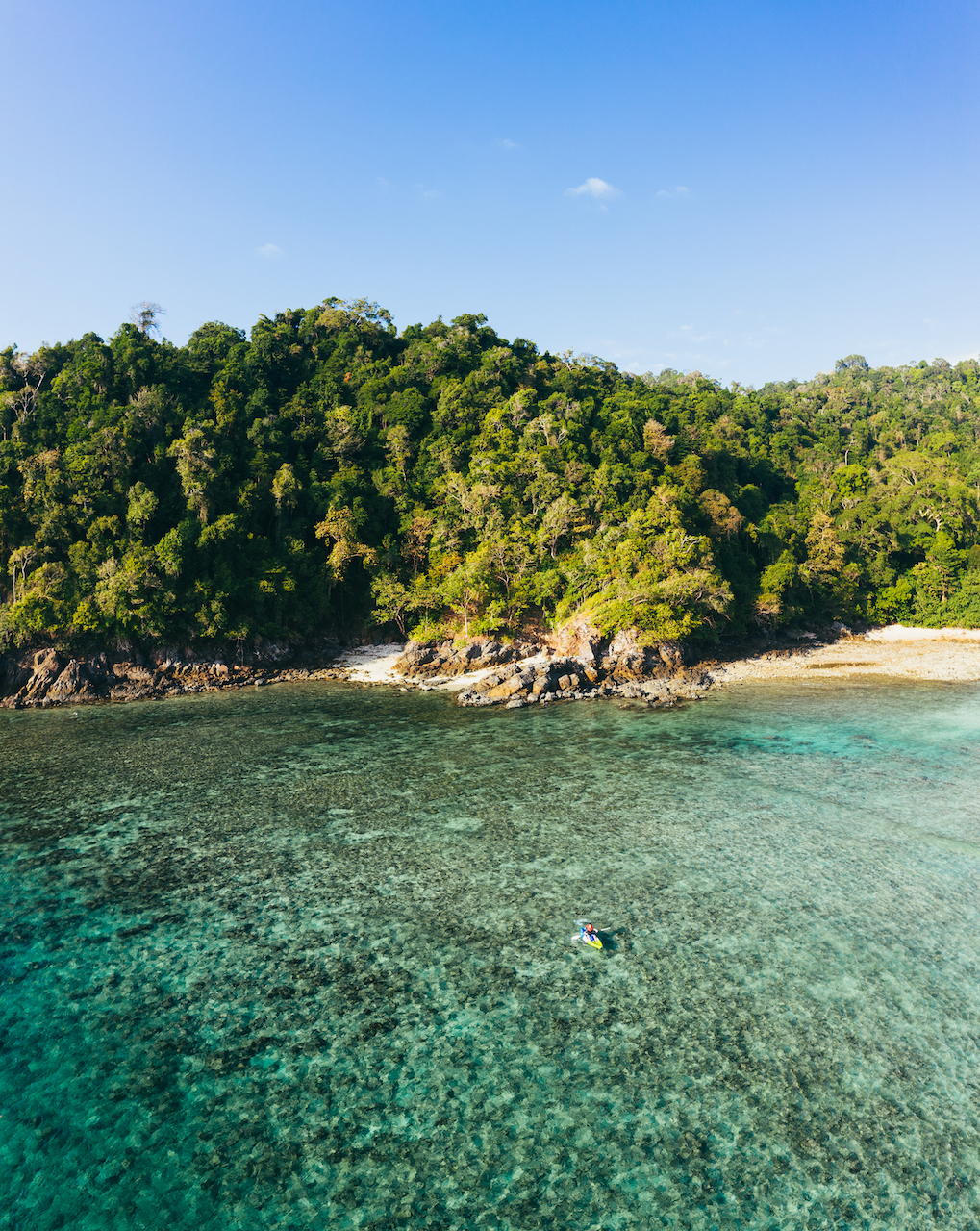
Far above my head, a white-bellied sea eagle lugs a large mullet around a jungle-festooned out-crop, soaring and swirling towards a nest hidden high up in the rocks. In front of my kayak, small schools of juvenile fish leap up at regular intervals to escape silver and bluefin trevally, creating a striking visual effect – like sparks of light or flashes of lightning – before falling back beneath the gentle waves. Something larger leaps right over the bow, so fast it’s impossible to identify but so close that I instinctively duck for cover. Soon, we beach our vessels on a stretch of undisturbed, bone-white sand that’s bookended by an impenetrable wall of mangrove forest and jutting granite cliffs, and I’m greeted by dozens of fiddler crabs that dart into the water at my approach. I feel like I could be the last person on earth: there are no shops or tourist boats – not even a mobile phone signal. It’s just me, on a heavenly-looking island that’s blissfully free of human intervention.
Or so it seems. Because I also know that a five-minute speedboat ride around the point, there’s a three-course meal and glass of wine waiting for me, as well as an infinity pool and a plush tented villa. Many resorts promise to transport guests to a secluded paradise; few can make that promise with as much conviction as Awei Pila, which opened on Pila Island in Myanmar’s southern Mergui Archipelago last December. Its 24 luxurious tented villas are the only accommodation on the island – which boasts 10 deserted, pristine beaches.
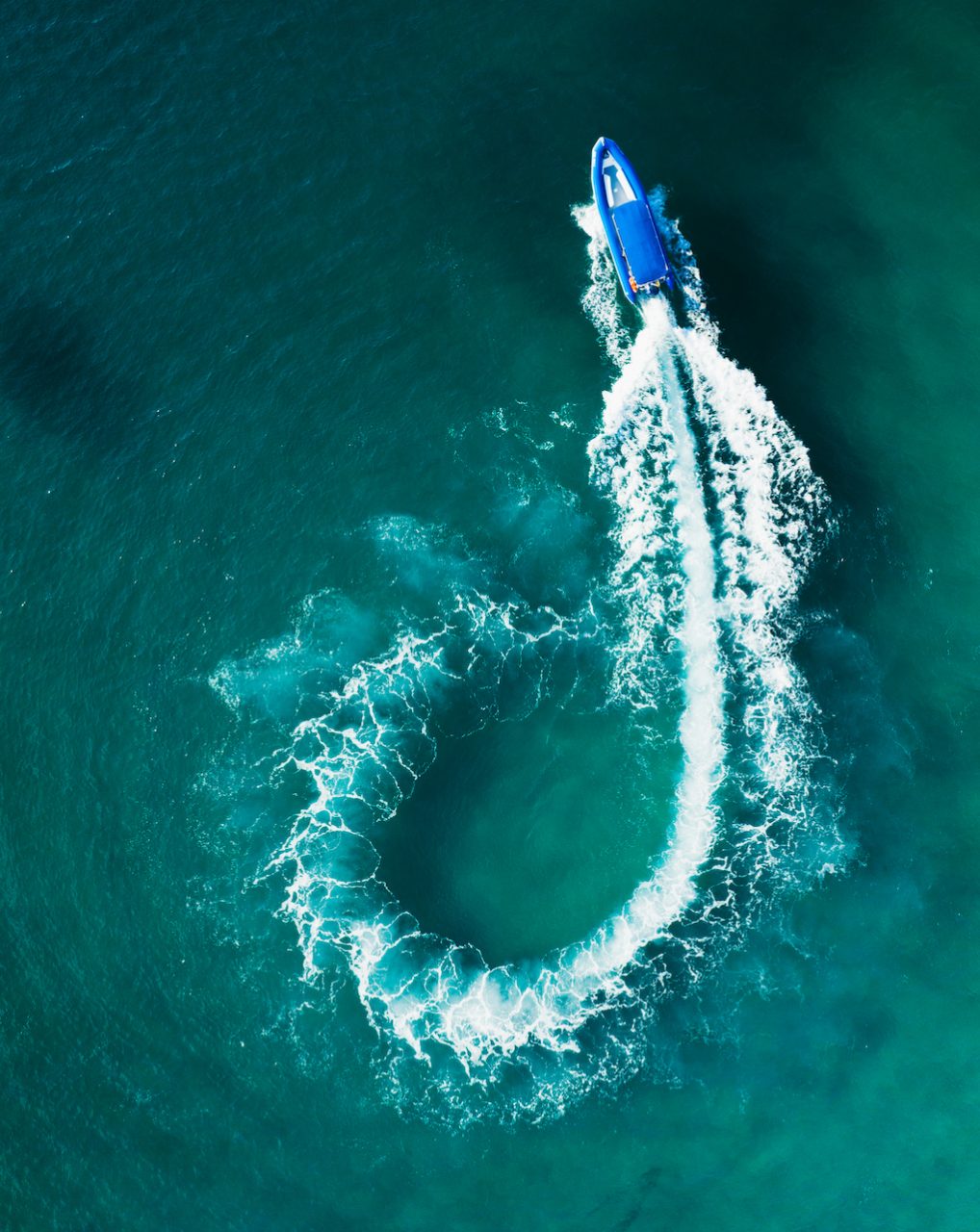
Perhaps no other location is a better fit for Awei Pila’s small-footprint tourism than the Mergui Archipelago. Pila is just one of more than 800 mostly uninhabited granite islands that were created hundreds of millions of years ago with the collision of the Eurasian and Indian tectonic plates. For centuries, these islands have provided safe haven to pirates, smugglers, insurgents, fishermen and the seafaring Moken, often referred to as “sea gypsies”.
Tourism began tentatively in the 1990s, but only a single island property, Myanmar Andaman Resort, was developed; most visitors explored the deserted beaches and coral reefs from liveaboard vessels. Shortly after Myanmar’s political transition began in 2011, authorities began considering proposals for development across the archipelago, and scores of the islands have since been leased to investors. Most are accessed from the southern town of Kawthaung, a two-hour flight from Yangon or a 30-minute boat ride across the Kra Buri River from Ranong in Thailand.
On the three-hour speedboat ride from Kawthaung, though, there’s little sense of a tourism gold rush. Awei Pila is one of just a handful of resorts to have opened over the past 18 months or so; others include Wa Ale Island Resort, Boulder Bay Eco Resort and Victoria Cliff Resort on Nyaung Oo Phee Island. Several more are in various stages of development. But we see none of these as we glide across the water, only fishing boats, empty islands and, at one point, bottlenose dolphins splashing above the waves.
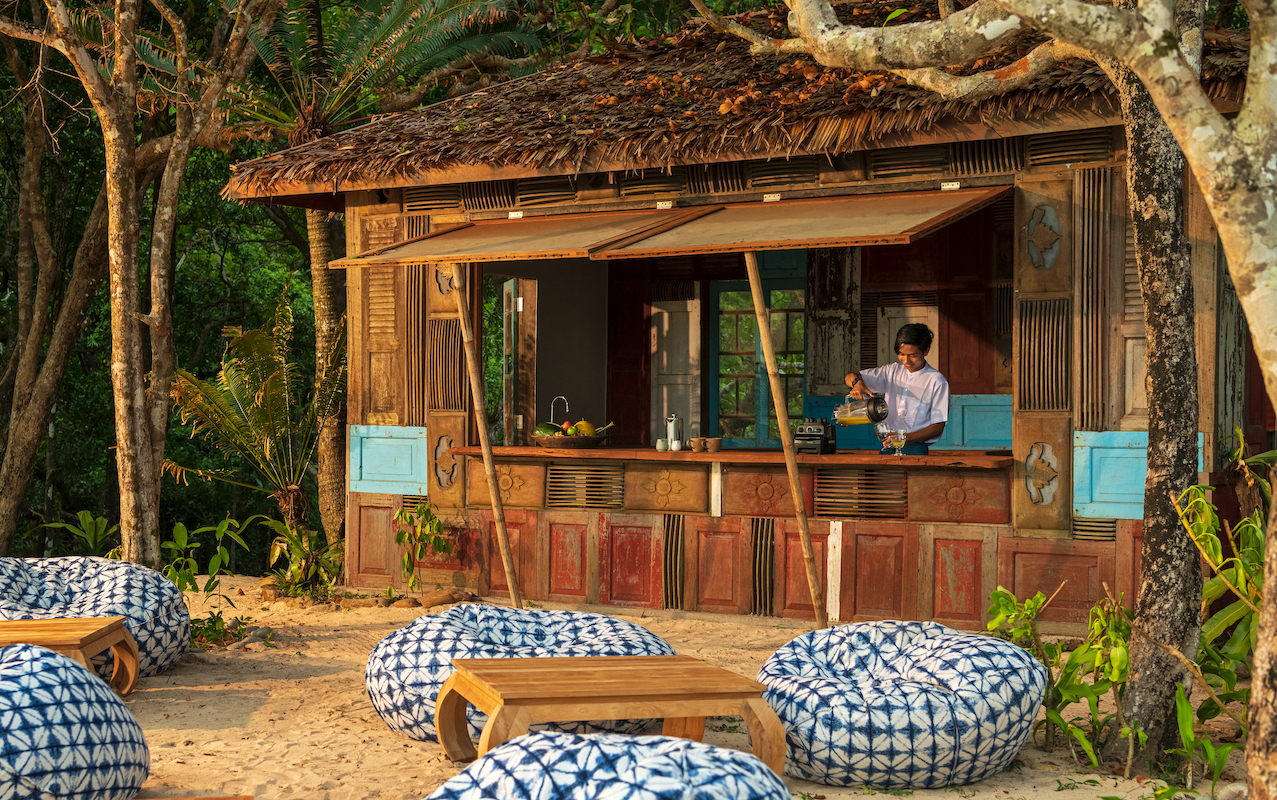
Awei Pila’s relaxed general manager Jon Bourbaud invites us to sit down over a gin and tonic. A tourism industry veteran, he’s been on Pila Island for four months straight and still looks like a man who can’t quite believe where he’s ended up. It’s only when we start talking about toothpaste – specifically, the cap on a tube of toothpaste – that Bourbaud tenses slightly. That little cap is all that stands in the way of him making the guest villas at Awei Pila completely plastic-free. Awei Pila is hardly the first resort to go plastic-free, but in Myanmar this dedication to sustainability is pretty much unheard of. For now, there are still a few traces of plastic around – a kettle, water bottles, toiletries – but in a few months, they’ll all be gone, replaced mostly with bamboo, natural fibres and glass, which can be crushed on-site and returned to the sea. “The only thing we can’t find a replacement for is the aluminium tube of toothpaste,” Bourbaud says with slight exasperation. “It has a plastic top.”
There’s a practical incentive to keeping plastic off Pila: every non-biodegradable item that comes onto the island has to make the long journey back to Kawthaung – a costly and time-consuming process. But running an island paradise brings with it a sense of responsibility. For a high-end resort in particular, Bourbaud believes, there’s an expectation to look after this gift that has been bestowed by Mother Nature – the stands of virgin jungle, the empty, clean beaches and the mangrove forests teeming with fish. “People want to feel good about where they stay and not having an impact on the environment,” Bourbaud says. “And we know plastic is the worst gift that Western society has ever given to the world.”
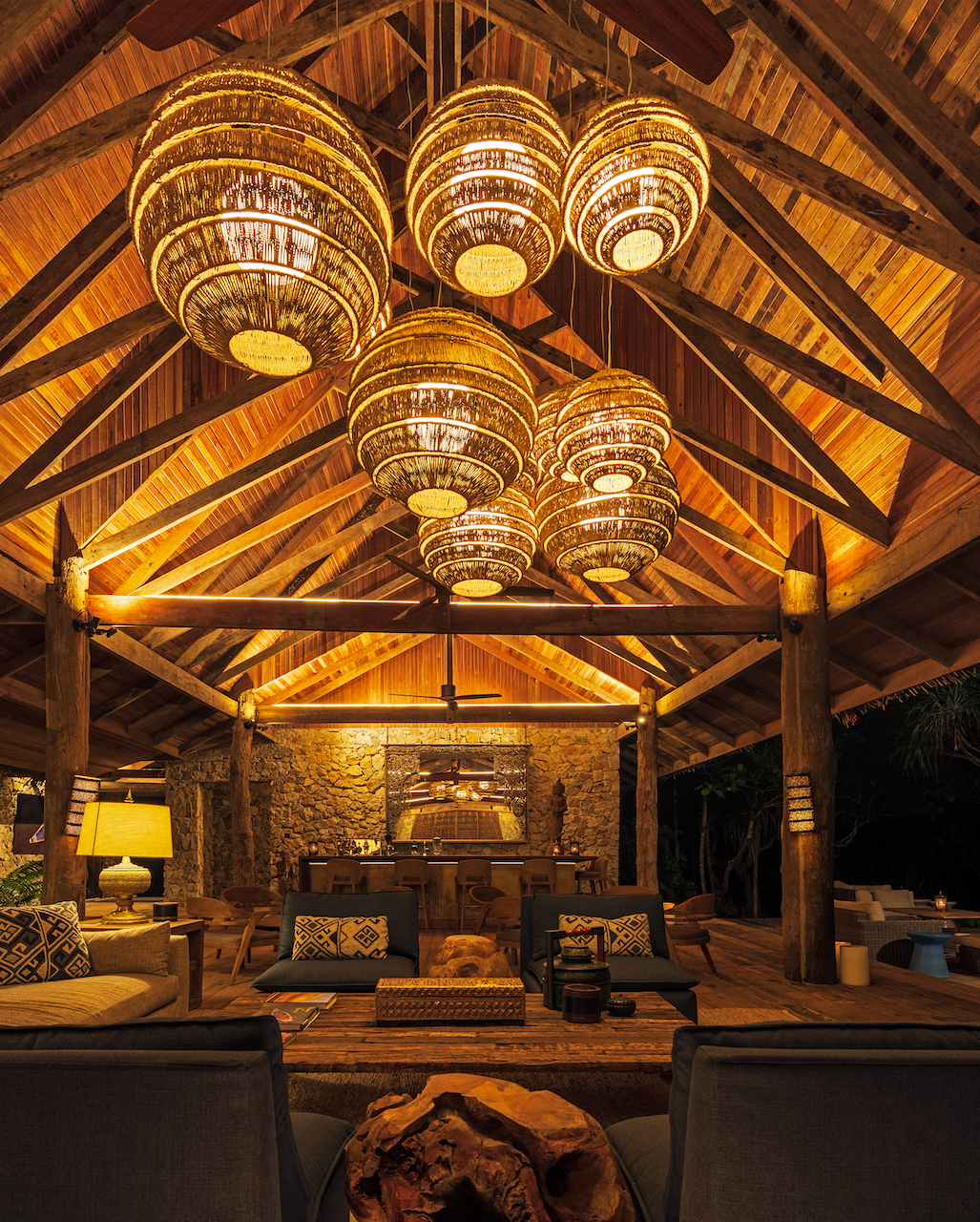
Thankfully, he’s not the only one crusading to keep Mergui unspoilt. For Boulder Bay owner Bjorn Burchard, preserving this archipelago is a personal mission informed by his experience in Thailand. Before arriving in Myanmar 25 years ago, he ran beach shacks on Koh Samui and watched as the country’s islands were, in his view, ruined by overdevelopment.
Accordingly, Boulder Bay dials down the luxury but ratchets up the environmental credentials. The resort is solar-powered and has an extensive reef regeneration programme; its 100% biodegradable toiletries are even made from fruit and vegetable products. He says Mergui stands a chance of avoiding some of the negative consequences of tourism because guests today are more willing to pay a premium for seclusion, clean air and a pristine environment.
“Why am I doing it? If it was for the money, I’d do something else,” the easy-going Burchard laughs over coffee when I meet him the following week in his tiny office in the heart of downtown Yangon, barely 50 metres from the capital’s gilded Sule Pagoda. “In the ’80s you had many of these kinds of places. Today, there are not many left…anywhere on earth. And Mergui is one of them.”
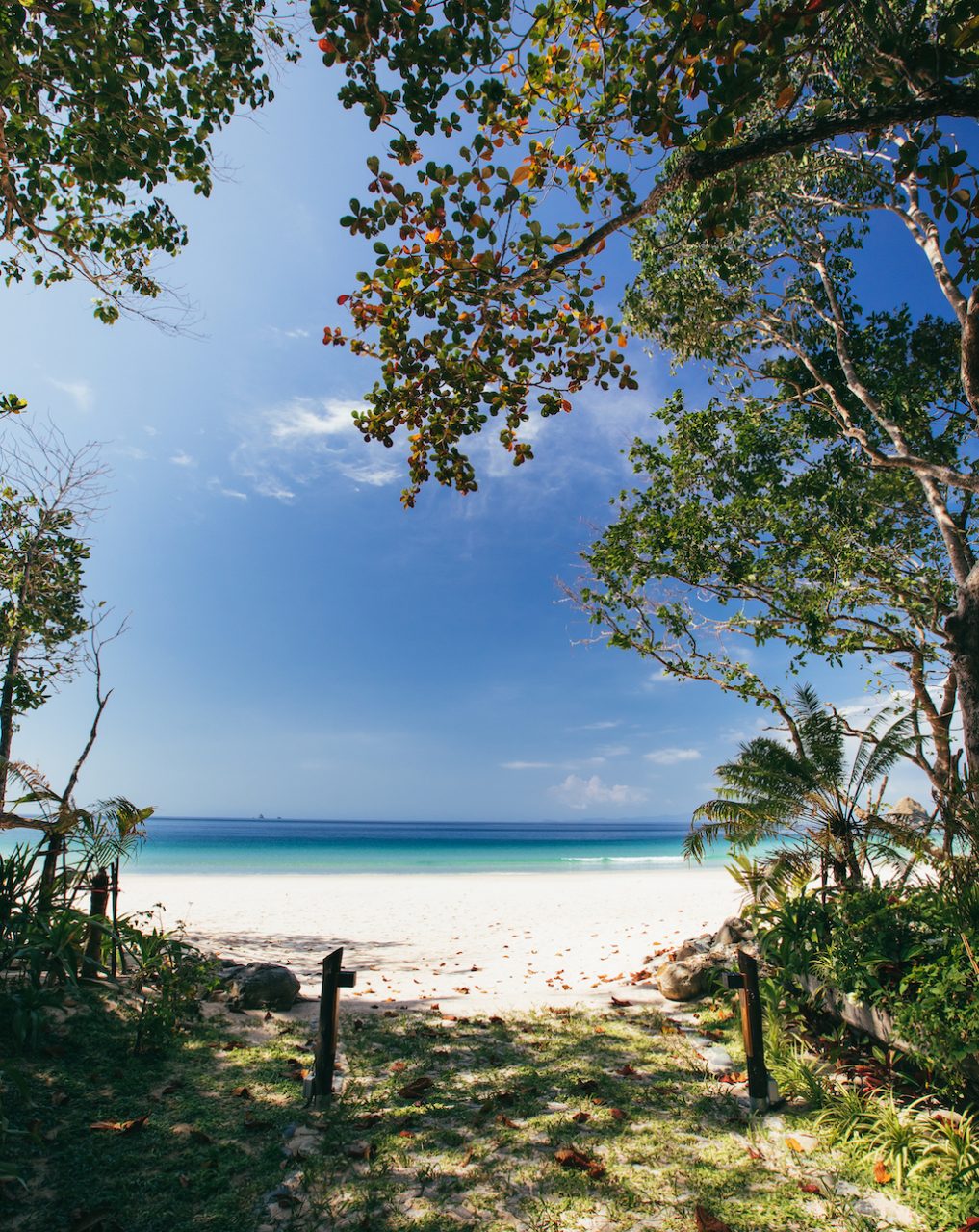
For hotel developers, Mergui is both a fragile and challenging environment. Gaining access to land is just the first step; there’s a maze of bureaucracy to navigate, with paperwork and a rigorous planning approvals process. Developers have to consider the cost and the logistics of bringing out construction materials and equipment from the mainland, and the need to find and house workers. Even something as prosaic as the weather is a major hurdle: Kawthaung receives around 150 inches of rain between May and October each year, bringing both construction and tourism to a halt. And not everyone takes to working in the archipelago; Boubaud likens it to being on a cruise ship, with staff eating, sleeping and breathing in close proximity. “Personality is one of the most important things we look for [in staff ],” he says.
“We thought, we might never get another chance to see these islands…and if we do ever come back, they won’t be the same”
U Hla Win, then, is the perfect hire. Awei Pila’s impeccably spoken guest relations manager actually worked as a seafarer for decades, shunting between ports in East Asia to escape the deprivations of socialist-era Burma, where he had previously worked as a middle school teacher. He enjoys the peacefulness of the Mergui Archipelago, he tells me – without phone coverage, it offers rare respite from the more hectic aspects of modern life. He jokes that at 75, he counts himself lucky to be getting paid to follow his doctor’s recommendation to rest at the beach. Despite his advanced age and jovial demeanour, U Hla Win has been a mainstay of Awei Pila since long before it opened. “I was here from almost the very start, I joined way back in May 2016 – there was nothing here. Now look at it,” he says as I sit down for breakfast on a breezy morning.
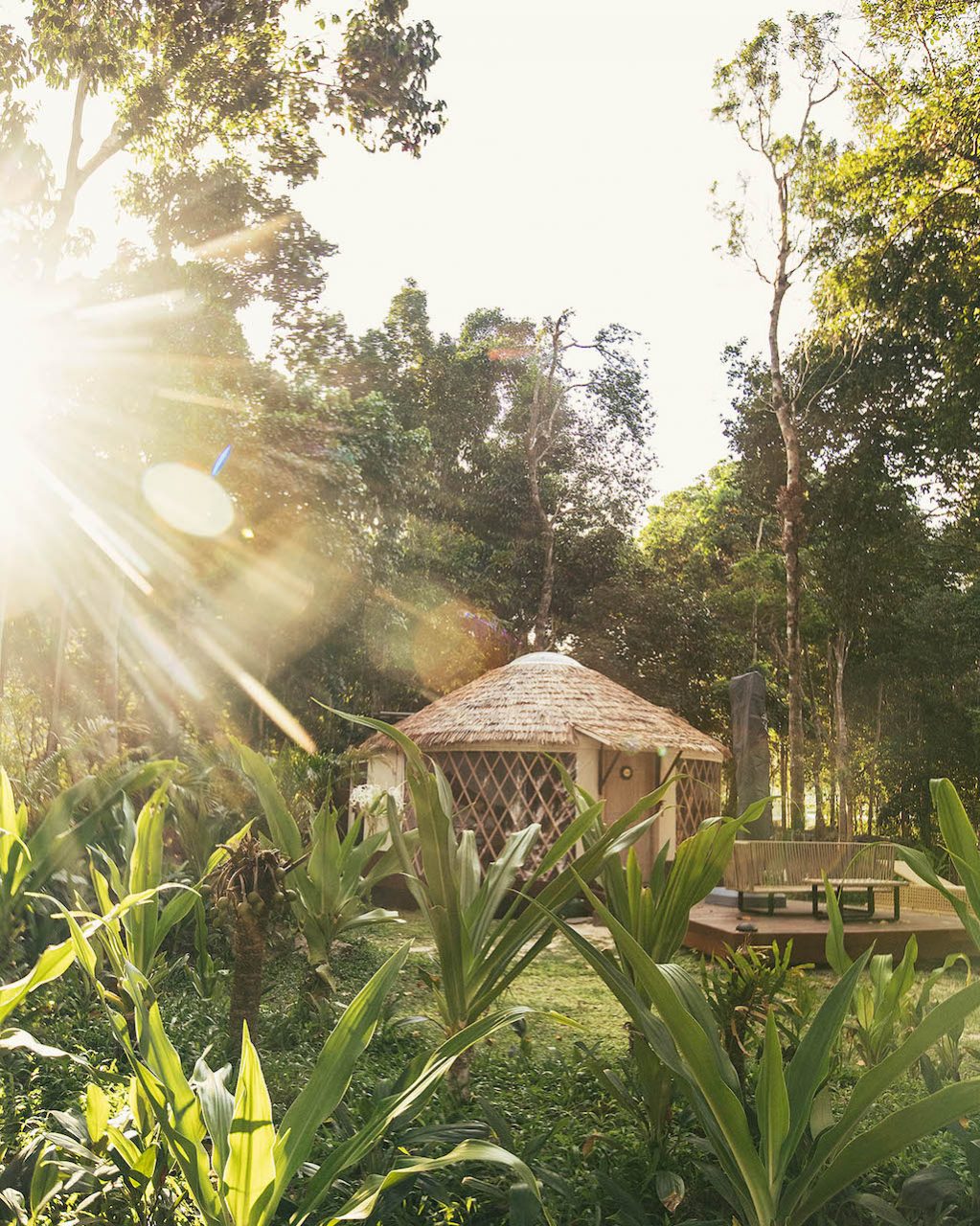
Once you get a sense of the challenges, it’s amazing anything gets built at all. Certainly, the prospect of Mergui becoming the next Phuket or Boracay seems remote. The geography is also more far-flung; the archipelago stretches more than 600 kilometres north to south, and islands can be up to 100 kilometres from shore. While there is potential for mass-market tourism, it’s difficult to execute on an island three hours from the mainland due to the high operating costs.
While that could change in the years ahead, for now, Mergui’s resorts really do feel like a private island paradises. In the cool mornings, I spend several hours wading and snorkelling with the beach entirely to myself. In the afternoon, I hike over the ridge behind the resort with Marcelo Guimaraes, a rugged Brazilian who’s Awei Pila’s resident marine biologst. The narrow track navigates dramatic groves of banyan and thanakha, the bark of which the Burmese grind with water into a thin paste that they apply to their face and body like lotion. Between diving trips with other guests, Guimaraes also takes me out snorkelling, pointing out a huge table coral as I dodge schools of sergeant majors.
But if the Mergui Archipelago is untouched, it is only by tourism. On a moonless night at Awei Pila, the horizon glows with the lights of boats, their batteries of green and blue fluorescent lamps luring squid closer to the surface. Fishing boats shelter in its many coves, the scent of frying fish paste and boiling curries wafting over the water.
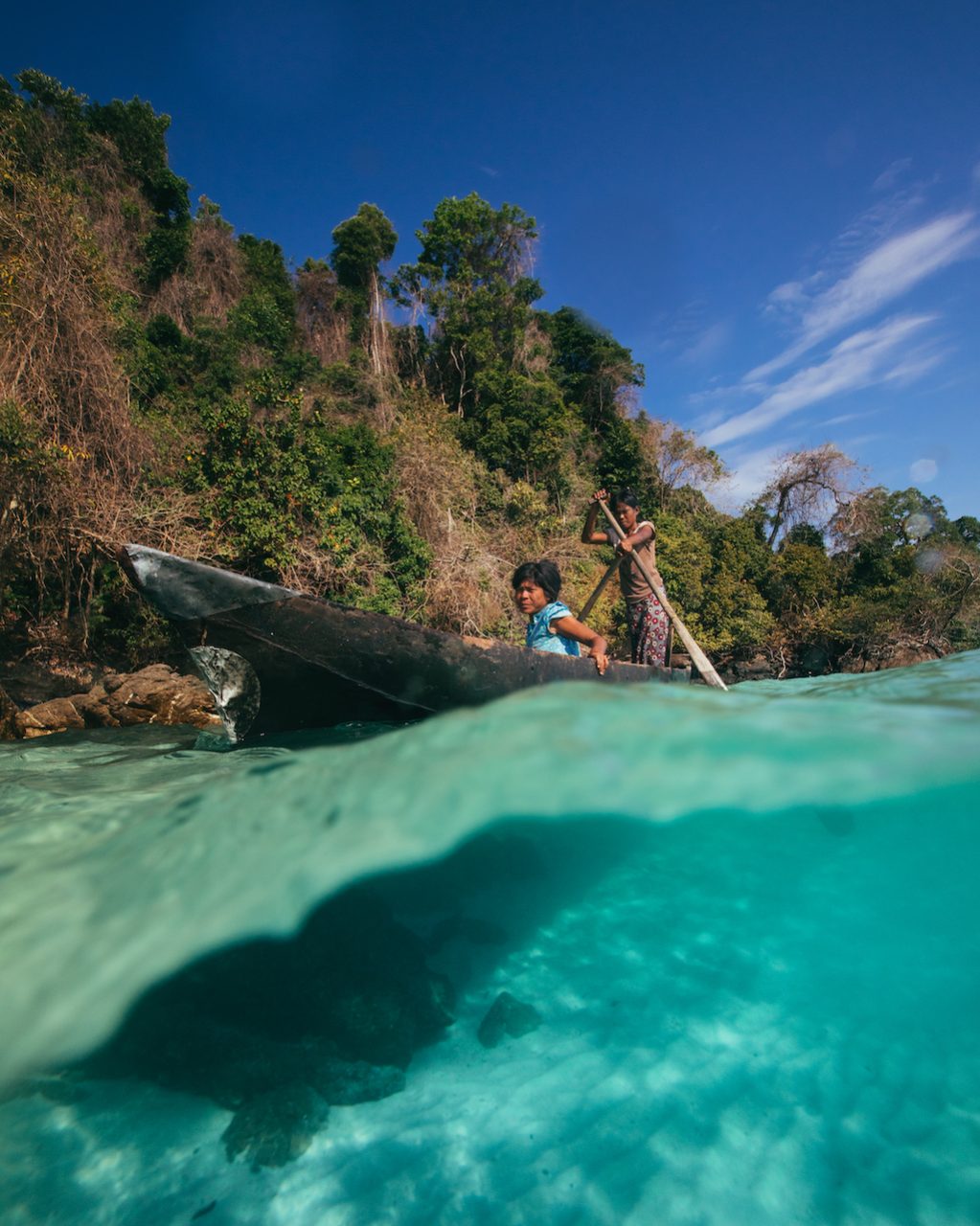
Awei Pila does not have sole claim to Pila Island. Stopping at a small clearing high on the hill. Guimaraes and I spot a lone Moken woman paddling a small vessel through the shallow water. As we continue along the path, he points to white markers beside the track that demarcate the resort from the nearby fishing villages.
Relations were initially rocky; when Memories Group, the Singapore-listed company that developed Awei Pila, got the concession for Pila Island, the larger ethnic Bamar fishing village, with its Buddhist stupa, school and beer shacks with pool tables on the sand, was not officially recognise. Technically, the company could have evicted its residents, but both sides agreed it was better to co-exist.
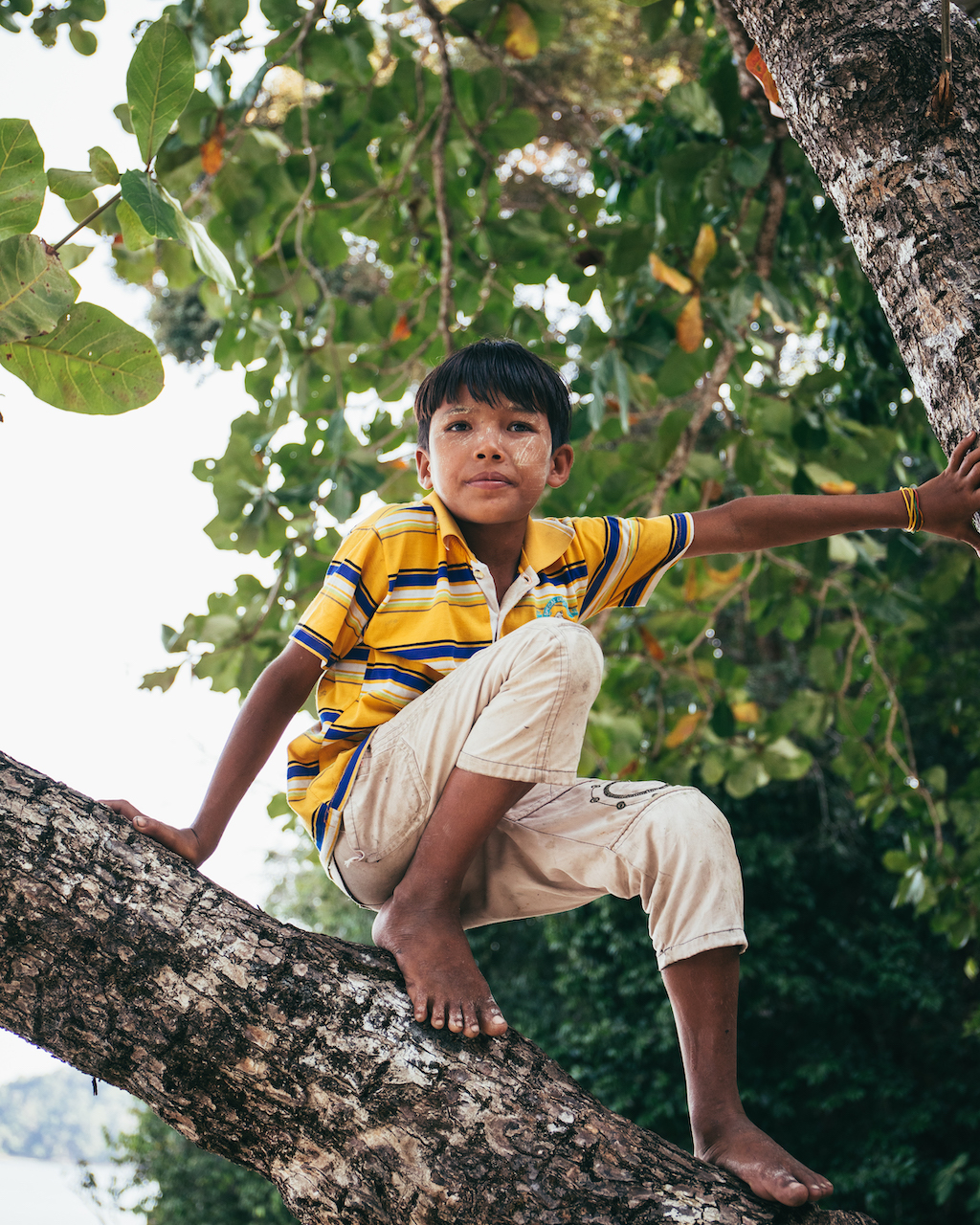
The smaller village, a settlement of barely a dozen Moken homes, is just six months old. The Moken are semi-nomadic, sailing around the archipelago during the dry season and taking to land for the fierce monsoon. This group decided to give up their seafaring life, they told me, because they are no longer allowed to cut down trees to make their traditional boats, which are carved from a single, massive trunk. They told me they are happy with the choice, though. Their children can go to school, and they catch squid and forage for oysters that they sell in the nearby village. Several men from the village work as labourers at Awei Pila. There are thought to be just a few thousand Moken still adhering to their traditional ways. Burchard says this lifestyle is unlikely to be sustainable in the future, particularly given the effects of overfishing. Tourism offers the best opportunities for younger Moken to transition into the economy and support their families.
“This area belongs to the Moken. They’ve been roaming around there for thousands of years,” he says. “They would be the perfect nature guides, to walk in the jungle and point where are the caves with bats and where are the beehives.”
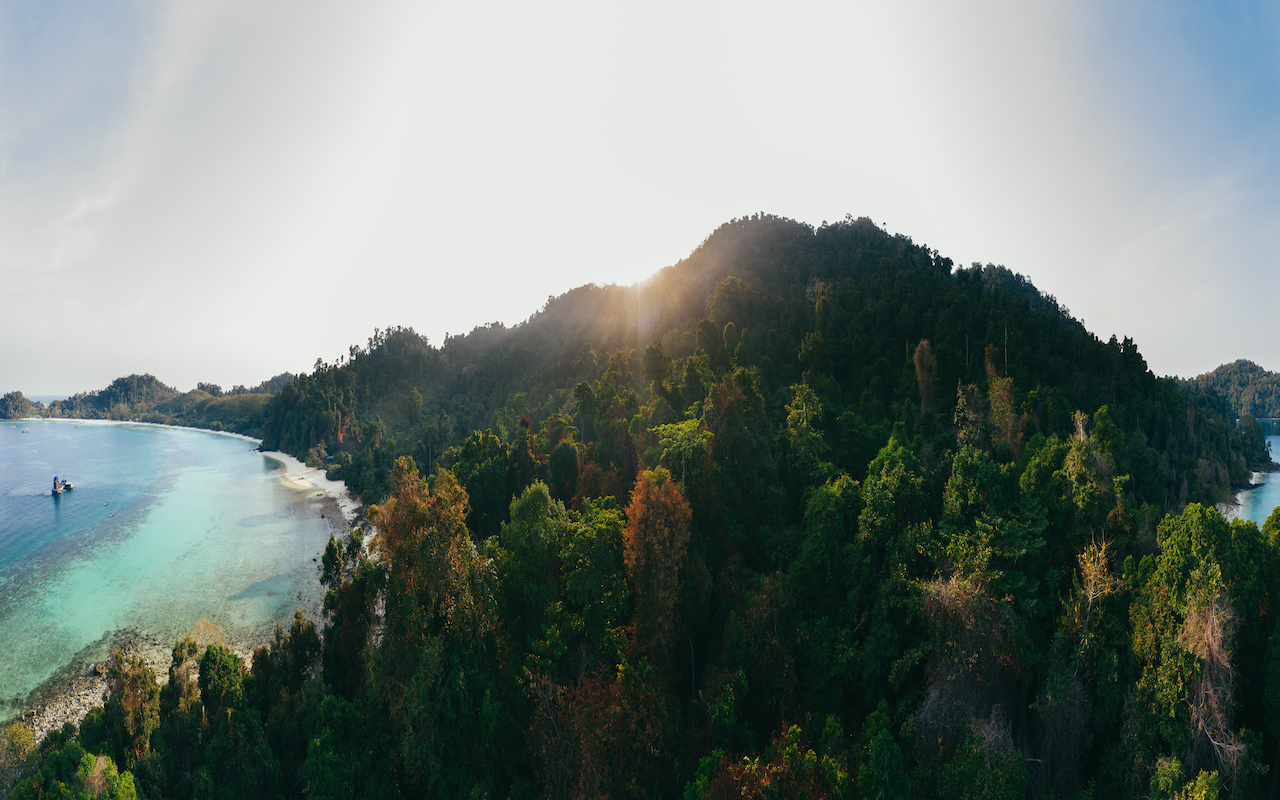
After leaving Awei Pila, I stop in the city of Myeik for several days, where I embark on a day-long cruise of the islands with a diverse group of 14 passengers from around the world. Over the roar of the speedboat engine, I chat with a French couple who have just started a three-week trip across Myanmar and found the archipelago’s allure hard to resist. “We thought, we might never get another chance to see these islands,” says the young woman, as we glide through a mangrove channel on the outskirts of Myeik. “And if we do ever come back, [surely] they won’t be the same.”
For Bourbaud, too, it’s the adventure into the unknown that makes this region so unique. “We’ll still have a couple of years…where people who visit will go back and say they’ve been to the Mergui Archipelago, and people will say, “Wait – where is that?”
Float on: Island resorts and day trips are only part of the tourism story in the Mergui Archipelago
Several companies offer luxurious live-aboard boating experiences that give visitors the chance to explore the region for up to two weeks on private charters or together with other travellers. Many visitors organise tours out of Ranong in Thailand, but inside Myanmar, Bjorn Burchard’s Moby Dick Tours is considered the pioneer of boat-based travel through the archipelago. Moby Dick runs four- and six-night “island safaris” on the MV Sea Gypsy that take in remote Moken villages, secluded snorkelling spots and wildlife-filled mangroves.
Further north, in Myeik, Life Seeing Tours runs budget-oriented tours on converted ferries that range from two to nine nights. In January, Burma Boating, a luxury sailing company under Memories Group, raised the bar a few notches with the launch of a 16.7m “silent” solar yacht. Designed by Silent Yachts and thought to be the first of its kind in Asia, the S55 features 30 mounted panels that generate enough power to run the yacht exclusively on solar power on an average sunny day.
Singapore Airlines flies to Yangon daily. To book a flight, visit singaporeair.com
SEE ALSO: 8 Maldives resorts promoting sustainable, eco-friendly tourism
This article was originally published in the April 2019 issue of SilverKris magazine
The post Is Myanmar’s Mergui archipelago Asia’s last unspoilt island utopia? appeared first on SilverKris.
from SilverKris
No comments:
Post a Comment